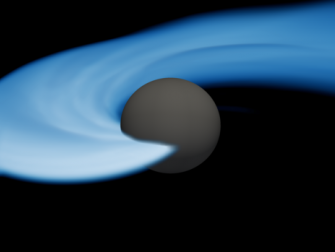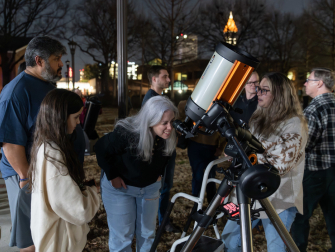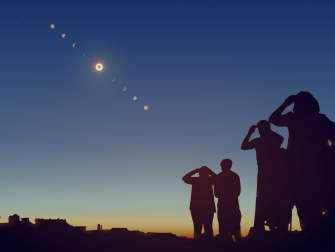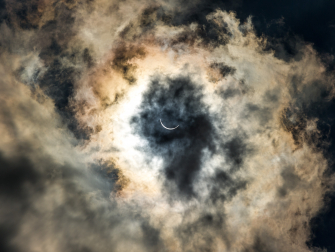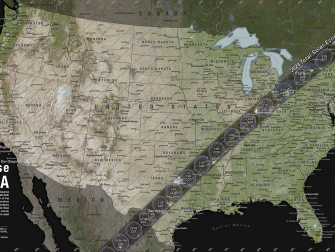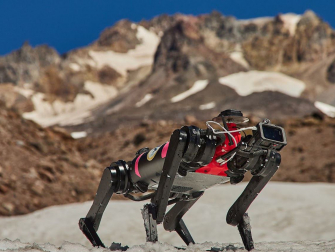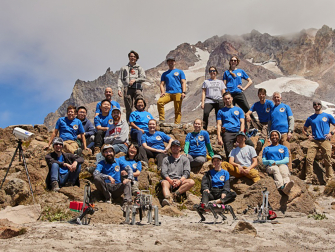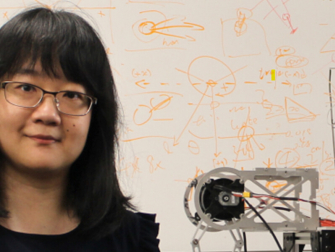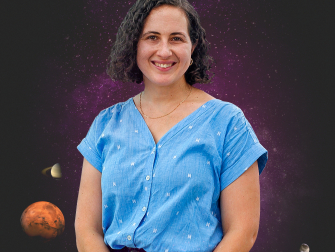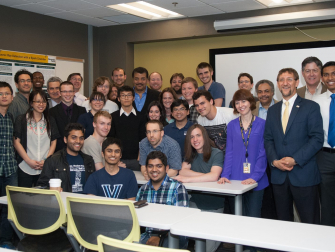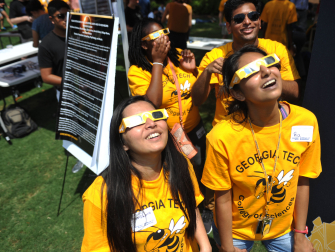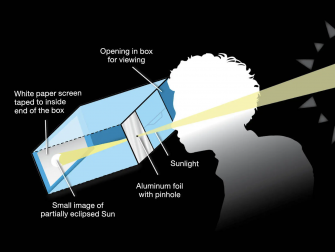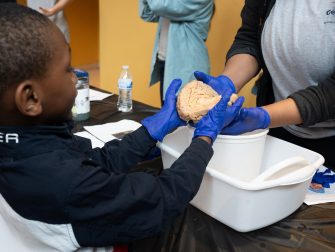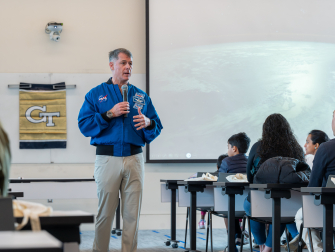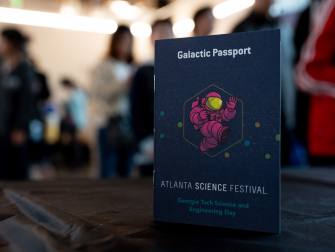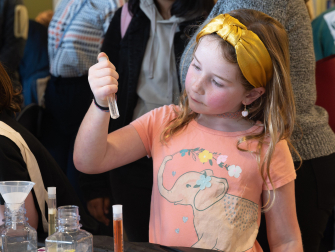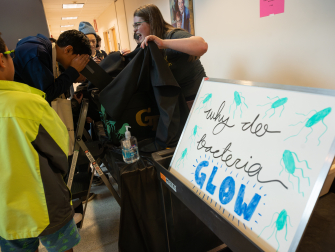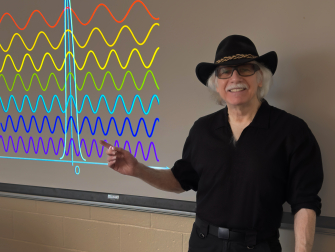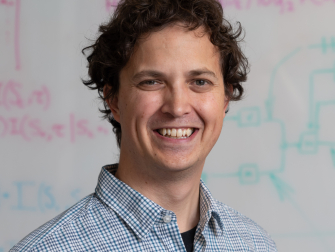Shortly after the start of the fourth LIGO-Virgo-KAGRA (LVK) observing run, the LIGO Livingston detector observed a remarkable gravitational-wave signal from the collision of what is most likely a neutron star with an unknown compact object — one that's 2.5 to 4.5 times the mass of the Sun.
This week, 50 students from Georgia Tech’s Astronomy Club will travel to Missouri to view the solar eclipse on April 8. Georgia isn’t in the path of totality — which occurs when the moon fully covers the sun — but Missouri is, and club members want to be there to experience the rare celestial event. While viewing the eclipse is the organization’s biggest adventure of the year, it is just one of many events the club hosts every month. The group is a place for hobbyist astronomers and physics students to connect over their love of the solar system and the mysteries within it.
As the April 8 solar eclipse approaches, millions of people anticipate participating in the wonder of this celestial event. Yet, for those with visual impairments, traditional methods of observing such phenomena may present limitations. Fortunately, resources from the team of Tech’s Sonification Lab offer an inclusive approach.
Sparked by a professor’s interest, 55 students from the School of Physics will travel to Illinois to enter the path of totality for the April 8 total solar eclipse.
Scientists at Georgia Tech have teamed up with the University of Southern California (USC), University of Pennsylvania, Texas A&M, Oregon State, Temple University, and NASA Johnson Space Center to teach dog-like robots to navigate craters of the Moon and other challenging planetary surfaces in research funded by NASA.
Wise, a professor in the School of Physics and director of the Center for Relativistic Astrophysics, spoke to how the James Webb Space Telescope has impacted astrophysics and our understanding of the formation of galaxies and black holes — a research area he specializes in at Georgia Tech.
While outside of the path of totality, the Georgia Tech community can still take part in the historic April total solar eclipse.
Chunhui (Rita) Du has been awarded a $652,965 grant by the U.S. Department of Energy for her research into quantum sensing. “The project has the potential to make important contributions to the burgeoning field of quantum materials,” says Du, “and to significantly promote the role of topological magnets in developing next-generation, transformative information technologies.”
Science and Engineering Day at the Institute included more than 45 exhibitions and interactive demonstrations, hosted by Tech faculty, staff, and students. The highlight of the event was a presentation by alumnus and former NASA astronaut Shane Kimbrough, who shared with audiences his experience of living and working in space.
More than 30 College of Sciences faculty across all six schools and the Undergraduate Program in Neuroscience are recognized by the Institute for their excellence in research and teaching.
School of Physics Professor Rick Trebino was honored for his invention and development of techniques for the complete and rigorous measurement of ultrashort laser pulses.
NSF has awarded the interdisciplinary team six years of funding to support the Integrative Movement Sciences Institute. The Institute, which includes a Georgia Tech contingent of researchers led by Co-PI Simon Sponberg, aims to bridge research on muscles spanning the molecular level to the whole animal to understand dynamic locomotion.
- ‹ previous
- 2 of 21
- next ›

